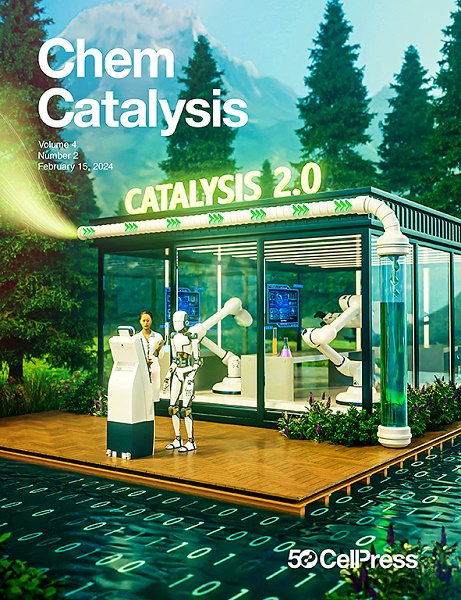Modular silver catalysts to elucidate the role of non-covalent interactions in asymmetric C‒H amidation reactions
IF 11.6
Q1 CHEMISTRY, PHYSICAL
引用次数: 0
Abstract
Chiral, non-racemic amines and aminoalcohols are common structural motifs in bioactive molecules. Asymmetric nitrene transfer offers a powerful approach to prepare enantioenriched amines directly from abundant C–H bonds; however, the development of general, cost-effective catalysts supported by easily tunable ligands remains a significant challenge. Herein, we report that Ag salts coordinated with unique bis(oxazoline) ligands catalyze site- and enantioselective nitrene transfer into benzylic, allylic, and unactivated C–H bonds of carbamate esters. This method provides 1,3-aminoalcohols in high yields with enantiomeric excess (ee) of up to 98%. Computations were used to rationalize key features influencing the observed stereochemical outcomes. Analysis of the enantiodetermining transition states revealed that high ee arises from a preferred square-planar geometry at the silver nitrene and stabilizing C–H/π interactions between the ligand and substrate. These features enable broad substrate scope and high chemo-, site-, and enantioselectivity in Ag-catalyzed C–H bond amidations via nitrene transfer.

模块银催化剂阐明非共价相互作用在不对称C-H酰胺化反应中的作用
手性、非外消旋胺和氨基醇是生物活性分子中常见的结构基序。不对称亚硝基转移提供了从丰富的C-H键直接制备对映体富集胺的有效途径;然而,开发通用的、具有成本效益的、由易于调节的配体支持的催化剂仍然是一个重大的挑战。本文中,我们报道了与独特的双(恶唑啉)配体配位的Ag盐催化位点和对映选择性亚硝基转移到氨基甲酸酯的苯基、烯丙基和未激活的C-H键上。该方法可获得高收率的1,3-氨基醇,对映体过量(ee)可达98%。计算用于合理化影响观察到的立体化学结果的关键特征。对映体过渡态的分析表明,高ee来自于亚硝基银的方形平面几何结构和稳定配体与底物之间的C-H /π相互作用。这些特征使得银催化的C-H键氨基化通过亚硝基转移具有广泛的底物范围和高的化学、位点和对映选择性。
本文章由计算机程序翻译,如有差异,请以英文原文为准。
求助全文
约1分钟内获得全文
求助全文
来源期刊
CiteScore
10.50
自引率
6.40%
发文量
0
期刊介绍:
Chem Catalysis is a monthly journal that publishes innovative research on fundamental and applied catalysis, providing a platform for researchers across chemistry, chemical engineering, and related fields. It serves as a premier resource for scientists and engineers in academia and industry, covering heterogeneous, homogeneous, and biocatalysis. Emphasizing transformative methods and technologies, the journal aims to advance understanding, introduce novel catalysts, and connect fundamental insights to real-world applications for societal benefit.

 求助内容:
求助内容: 应助结果提醒方式:
应助结果提醒方式:


